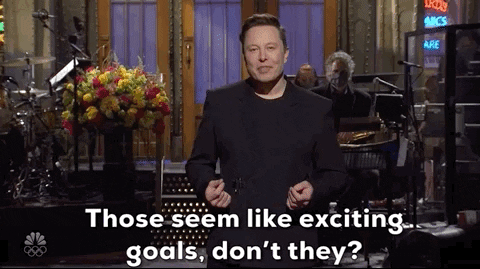productivity tips · Sep 29, 2021
The Power of Setting Short-term Goals

When it comes to productivity — both personal and professional—short-term goals are the most effective. These goals are easier to map out, easier to complete, and easier to replicate than long-term goals.
They provide more immediate motivation compared with long-term goals. And, multiple goals can be worked on at the same time. Finally, short-terms goals are completed faster than long-term ones.
Setting short-term goals helps with productivity because it can give direction to your focus. That is, by focusing on each goal you are ensuring you are closer to completing your overall objective.
This, in turn, helps build and then sustain momentum. As you complete each task it motivates you to finish the next as you see how achievable each task is. And as you achieve each task you will feel more confident in your work.
Finally, short-term goals have been shown to encourage self-mastery. To be more accurate, completing and successfully achieving tasks can lead to self-mastery. That is, it helps you to develop the skills and character of a person able to achieve reaching and completing goals.
3 differences between long- and short-term goals, and why short-term goals are better
From the outset it should be pointed out that long-term goals are necessary. After all, often the best way to set short-term goals is by looking at your long-term goals and then breaking them down. The process of breaking down long-term goals into smaller, short-term ones allows you to more readily focus on the little things that will, over time, help you achieve the big picture.
The advantage here is that instead of thinking in terms of months or years, you can think instead in terms of days or weeks, which is much more manageable. And makes staying motivated on a point easier.
Here are three reasons why it is better to focus on short-term goals; and why they are better for productivity.
1. More immediate motivation
Long-term goals can take months, even years, to achieve. Which can sometimes be demotivating. With shorter-term goals, they are completed quickly and therefore provide a more immediate sense of success. With success comes motivation—and the desire to keep meeting with that feeling of success.
This is the power of setting—and completing—short-term goals. Seeing the quick progress helps you keep going. Unlike long-term goals which can sometimes be easy to lose sight of, or feel like you’re not getting anywhere.
2. Multiple goals worked on simultaneously
Most people have at least two long-term goals—one personal, and one professional. With short-term ones you can work on many simultaneously. These shorter ones can either overlap or have nothing to do with each other.
For example, you may have a career-related goal and a relationship goal. You can work on multiple short-term goals at the same time to achieve both.
And when at work, sometimes tasks require a bit of back-and-forth between team members. With a series of short goals set, each team member can keep working as tasks go back and forth between necessary team. Allowing for work and momentum to continue ensuring everyone stays productivity.
Read more on the myth of work-life balance.
3. Faster completion
The third and final difference is that completing shorter goals is much faster than long-term goals. After all, that’s why they’re called long-term goals. And, of course, “long” is relative. It could be a year (career advancement) or many years (pay off a mortgage).
Irrespective of your long-term goals, they are long, and short-term ones take only a fraction of the time to complete.

5 ways short-term goals positively affect productivity
The power of setting short-term goals is in how they positivity affect your overall productivity. And they are able to do this in five ways.
They provide you with clear direction that helps generate momentum and allows you to stay focused and motivated.
The 5 ways short-term goals positively affect productivity:
1. Triggers actionable behavior
‘Triggers actionable behavior’ is a rather long-winded way of saying ‘motivation’. With a clear set of goals, you are able to stay focused on actionable behavior.
For example, saying “we need to get this project done as soon as possible” isn’t motivating. It’s too nebulas, too vague. How do you action that? Where do you start?
But if you say this project must be completed in 3 months, you can then break the project down into smaller goals. And each goal will help you meet that 3-month objective. It will help you stay motivated and on-track to complete the long-term goal.
Additionally, breaking down a 3-month objective into smaller parts will also give an idea of exactly how much time you will need to spend to get it done. Which will allow you to be better plan so that you can ensure you complete it on time.
2. Gives direction to your focus
Carrying on from the first point: having a series of short-term goals helps guide you towards each new step. Smaller goals will naturally direct your focus toward the next goal and the next goal until completion.
Essentially leading you in the necessary direction which forces your behavior and actions to follow. Which, in turn, helps you stay focused toward achieving your end goal. And this is one of the ways short-term goals can help you be more productive.
Read more on strategic thinking, project complexity and how project management software can help.
3. Generates momentum
Smaller goals are the guide posts letting you know you’re getting close to the end-goal. When you successfully reach a guide post, you’re already starting on to the next one. You have the success of having passed all those previous guide posts, with the certain knowledge each one will bring you closer to your end goal.
Also: achieving—and seeing—progress has an addictive quality. Your brain release dopamine after getting a reward. And the success of completing a task is like a reward. Hence, the addictive quality of completing tasks.
This is also why it is good to break down projects or objectives into a series of short-term goals to help sustain momentum to achieve a bigger goal that will, in itself, pay off.
4. Gives focus and clear vision
Setting shorter goals makes it easier to adjust your focus and your behavior. Because you are working on those goals today, or over a week, you can get feedback sooner. This allows you to make any necessary changes or adjustments to the work you are doing. Or even they way you are doing work.
With regular feedback, and a clear picture of what you have done and what you need to do next you can course correct as necessary. And you can reassess future deadlines and tasks based off how you completed previous goals.
Not only is this helpful for the project you are currently working on, but it can help you when applying this strategy to future long-term goals.
5. Promotes self-efficacy
The real power behind setting short-term goals is the way in which achieving goals builds character. Now, that may seem melodramatic. But it’s no less true.
As has already been mentioned: achieving goals releases dopamine, making you feel good. Setting goals builds character, and helps you identify what it truly important right now.
Going after your goals is how you achieve success—it is the literal (and figurative) money-maker because it builds and promotes self-efficacy.
The more short-term goals you achieve, the more it helps you develop into the sort of person who can readily achieve their goals.
How to improve productivity with short-term goals
The power of setting short-term goals is in how they help you become more productive. They give you a more clearly defined road map to achieving your long-term goals, allowing you to stay focused and motivated. Which, therefore, improves your chances of success.
Since it can take many smaller goals to achieve your end-goal, you can develop the habit of achieving which helps you to stay on point for longer.
It is also far more useful to know you have got to get a task done today, so you can start another tomorrow and so on, rather than the idea that in 3-months’ time you must complete a large project.
The first one is more goal-orientated and success-driven. The second is kind of vague and unhelpful. After all, where do you start? What is more important? Is there any order to the tasks in order for the project to be completed on time and to specification?
By breaking down a long-term goal — say a project, into smaller steps in order of priority. You are giving yourself every chance of success. And not just for this project.
Once you get into this rhythm, it becomes easier and easier to replicate and so apply to every long-term goal.
To apply this to work, you want a project management software that can help you organize a project into tasks and subtasks across a team with an easier user interface, cloud-based storage, and a host of features to improve productivity and help complete projects on time.
If you would like to know more, please subscribe to Quire Blog today.


